2024 Chevrolet Trax Review: First Drive

FAST FACTS
| Engine: | 1.2-liter I3 Turbo |
| Output: | 137 hp, 162 lb-ft. |
| Transmission: | 6AT, FWD |
| Fuel Economy (MPG): | 28/32 (city/hwy) |
| Starting Price (USD): | $21,495 (inc. dest.) |
| As Tested Price (USD): | $24,998 (inc. dest.) |
The 2024 Chevrolet Trax might be Chevy’s most improved model, ever. Stylish and reasonably priced, this alluring crossover might be good enough to make you forget that you can’t get AWD.
The small SUV segment is kind of an awkward little market, isn’t it? The segment is full-to-bursting with competitors, with many automakers offering several entries in the same segment. Yet, most of these models find happy buyers, the market can’t get enough of these tiny crossovers. Just take the Chevy Trax, it was once an ugly duckling that seemed to sell in spite of its styling and mediocre value proposition. Now, the crossover has now been transformed into a stylish hunk of sheet metal that just might be the most compelling offering GM currently has on sale across all of its brands.
What's New For 2024
If you remember the legacy of the old Chevy Trax, it was a crossover based on the quite endearing Chevy Sonic. Yet, because it was initially meant for European audiences, GM wasn’t convinced that the vehicle had a market here in North America, citing styling and physical size as reasons why the model wouldn’t be a good fit for the US and Canada. Eventually, the corporate automotive goliath relented, first introducing the car in Canada for the 2014 model year. Chevy eventually ported the crossover to the United States for the 2015 model year, and the model has enjoyed modest success in both markets.
SEE ALSO: 2024 Chevrolet Trax Gets More Car-Like, Better Overall
Still, the old one wasn’t all that great. Awkward looking, unsatisfying to drive, and not-so-nice to be inside, it was more of a car that one was sort of just got stuck with, rather than sought out. Practically everything else in the segment was nicer and better, save for maybe the atrocious Ford Ecosport.
Exterior Style
It seems like Chevrolet knew this, going out of its way to aggressively rectify that lackluster image, and target Gen Z and young millennials. To do this, for starters, the Trax got a whole new look, inside and out. Sharing much of its design with the Chinese market Chevrolet Seeker, the new Trax is lower, longer, and wider than the old model. Like, 11 inches longer, with whopping six inches going to the wheelbase. The result is that of a crossover that visually might skew more toward the station wagon side of the crossover spectrum, rather than an SUV.
The front fascia is similar to the current generation Blazer, a car two class sizes up. Slim daytime running lights sit near the hood, and like the Blazer, the real headlights are discreetly mounted low on the fascia. The Trax’s rear is also a treat, big taillights take up most of the rear, and the somewhat fast roofline makes the Trax look sportier than it has any right to. The extra inches in length and width do wonders for the proportions, the Trax’s hood is long, and the hips are wide, resulting in a car that looks strikingly athletic. It’s the polar opposite of the old car, which was tall, skinny, and oddly proportioned as if it were a dodgem car that someone had managed to drive home from the county fair.
However, there are a few styling differences between the trims. The LS, RS, and LT trims get a wishbone-shaped chrome mustache and slightly different front fascia, compared to the Activ trim. The Activ Trim (pictured here in yellow), loses the front shiny chrome brightwork and gets 18-inch black wheels. The other trims make do with 17-inch wheels, save for the 2RS trim, which has 19-inchers.
Interior Style and Quality: Spacious and Premium for the Price
The interior of the Trax is stunning, especially for its price point. On upgraded model grades LT and above, the Trax gets two 10.25-inch, driver-oriented twin screens that come with a smorgasbord of standard equipment. No matter the trim, you’ll get wireless Apple CarPlay and Android Auto. It uses the same Google-based car OS that we’ve seen in the new Silverado and Sierra, and it’s making its rounds here on the Trax, too.
Plastic fitment is tight, and no switch or knob on the Trax feels explicitly cheap or overly basic, considering the Trax’s low entry price. True, plastics aren’t exactly of the high-dollar soft-touch variety, but remember, this is now Chevy’s cheapest offering. The Trax feels alluring and expensive in ways that the Nissan Kicks or Hyundai Venue or even Hyundai Kona just aren’t. That’s something no one would have ever said about the old Trax.
Interestingly, the Trax is actually slightly bigger than the Trailblazer, which it technically sits beneath. The new styling and platform have allowed the Trax to grow significantly in legroom and trunk space. At 38.7 inches of rear legroom, and 41.9 inches of front legroom (80.6 in total), the Trax actually bests the Trailblazer’s 80.3-inch measurements. The rear cargo room with the seats up is a bit larger too, with 25.6 cubic feet, compared to the Trailblazer’s 25.3 cu ft. The Trax does all of this with a less upright driving position.
Can the Chevy Trax and Chevy Trailblazer Coexist?
Looking at the dimensions, power, and size, the existence of the Trax kind of begs the question: why is Chevrolet offering two roughly similar-sized vehicles in the same segment?
There’s a certain strategy here. Buyers are desperate for an entry-level model from Chevrolet, which is part of the reason why the old Trax stayed on sale. The new Trax is meant to court those buyers in search of basic transportation, the buyers who once had Chevy Cruzes, Sonics, Sparks, and old Traxes. Thus, the Trax’s development was largely focused on making the vehicle affordable to buy.
Powertrain and Efficiency
For example, despite riding on the same VSS-F platform as the Trailblazer, the Trax no longer has an option for AWD. In China, the similar Chevrolet Seeker has a far more powerful 1.5-liter turbocharged engine with a CVT transmission. North Americans have to make do with a more basic 1.2-liter three-cylinder turbo, mated to a traditional six-speed automatic. The transmission is especially an anomaly in the era of CVT and multi-speed automatic transmissions. GM engineers said using this particular engine and transmission helped get the vehicle to such an attractive price point.
Comfortable, But Not All that fast.
The 1.2-liter three-cylinder turbo is actually the same engine found in the lower-trimmed Trailblazer and Buick Encore GX. It produces 137 horsepower and 162 ft-lbs of torque, technically a step backward from the 155 horsepower, 177 ft-lbs of torque found in the 1.4 turbo of last year’s car. And yet, Chevrolet engineers were able to make the new Trax quicker and more economical, partially because of the lower weight of the new platform. City economy jumps to 28 MPG, although the 32 MPG freeway trails some competitors like the Nissan Kicks.
On the road, the new Trax feels reasonably competent. True, the three-cylinder engine isn’t the smoothest or quietest under hard acceleration, but it only feels out of its element at the hands of drivers like me, who envision every press drive as a chance to pretend like they’re in a real-world stage from Sega Rally 2. Initial city acceleration or freeway merging feels good; the 1.2-liter builds power quickly and holds it strong through the rev range, and the six-speed automatic is good at being smooth and unintrusive.
Higher-speed passing maneuvers may find the Trax in want of more power, but generally, it’s an adequate unit. The old Trax’s 1.4-liter had an extra cylinder and might have been quieter, but it wasn’t as responsive. Six of one, half dozen of the other, right? While cruising, the three-cylinder quiets down, and its noise is not very notable in the remarkably quiet cabin.
Handling and Drivability: Responsive, Surprisingly Sharp
The Trax’s ride and handling have are vastly better, too. The Trax was never much of a corner carver, despite the Sonic subcompact it was based on being a sharp-driving car. This new car manages to be reasonably engaging, the steering has a bit of verve considering the class it competes in, and it grips corners in ways that the old Trax or even the Trailblazer does not.
Chevy engineers once again thank the new platform and design for this; the wider track and lower roofline allowed them to change the driving position and lower the center of gravity. None of this comes at the expense of ride, the Trax is compliant and sophisticated despite the not-complicated MacPherson strut front, and semi-independent rear torsion beam rear suspension. The ride is best on the 17-inch wheels, but still fairly comfortable even on the Trax’s optional 19-inchers.
Is There Anything Wrong with the Chevy Trax?
The Chevy Trax’s worst enemy seems to be Chevy itself, honestly. It’s a stylish, well-priced offering that for once, feels desirable. Yet, there are awkward caveats that almost feel as if the model is being held back on purpose. For example, there’s not a single cup holder or front seatback pocket for the rear passengers. Strange.
The 1.2-liter three-cylinder and six-speed auto are fine enough, but without AWD its a non-starter for a lot of buyers. If the Trax had a more powerful engine or at least AWD, it would make the Trailblazer completely redundant. Chevrolet insists that the Trailblazer’s AWD, more upright driving position, and other premium goodies, like a panoramic sunroof are reasons why one would pick the Trailblazer over the Trax. I’m not buying that logic. If you’re a buyer who wants a small crossover and can live without AWD, the Trax is the more compelling offering of the two.
Price to Sell
The real kicker of the Trax is its very low price. In the United States, a base LS Trax can be had for a featherweight $21,495, including destination fee. A top-of-the-line Trax Activ or 2RS maxes out at $24,995. Only a handful of options are available for the Trax; the Nitro Yellow Metallic paint is an extra $395, a sunroof package that includes a wireless charging pad is $895, and the driver assistance package that adds adaptive cruise control among other things is a mere $650. This is very attractive, as the new Trax undercuts the Nissan Kicks and Hyundai Venue while being a better car with more standard equipment. Heck, I’d reckon that with AWD, it could be a solid alternative to offerings like the Subaru Crosstrek or Honda HR-V, but alas, it doesn’t have it.
Canadian pricing is slightly little less attractive, starting at $24,998 CAD for a basic LS, and maxing out at $30,798 CAD for the 2RS or Activ trims. This puts the Trax between the Venue and Kona, but the Kona can quickly get expensive when options are added, and the Venue has less room than the Trax.
2024 Chevrolet Trax: The Verdict
Whatever the case, Chevy should get some sort of award for turning the Trax from a mediocre, uninspiring, ugly duckling, to a beautiful and compelling small crossover. Despite lacking AWD, the new Trax makes a strong case for itself in a very crowded segment. I would say it’s the best automotive “glow-up” of all time, but I think the universe would give that award to the new Toyota Prius.
Oh well. It’s still the best glow-up in my heart, Chevy.
FAQs
Where is the 2024 Chevy Trax built?
The Chevy Trax is made and imported from South Korea.
When can you get the 2024 Chevy Trax?
The Chevy Trax is already on dealer lots as of April 2023.
What is the gas mileage on a 2024 Chevy Trax?
The 2024 Chevy Trax’s fuel economy is 28 city, 32 highway, 30 combined.
Is the Chevy Trax available with all-wheel drive?
As part of a plan to differentiate Chevy's small crossovers, notably the Trax does not come with all-wheel drive - not even as an option.
What is the Cargo room of the 2024 Chevy Trax?
The rear hatch area of the Trax offers 25.6 cubic feet of space, which expands to 54.1 cubic feet with the rear seats folded flat.
What colors does the 2024 Chevy Trax come in?
For 2024 the Trax is available in a total of 10 different colors including Blue Glow Metallic, Cacti Green, Cayenne Orange Metallic, Crimson Metallic, Fountain Blue, Harvest Bronze Metallic, Mosaic Black Metallic, Nitro Yellow Metallic, Sterling Gray Metallic and Summit White.
Become an AutoGuide insider. Get the latest from the automotive world first by subscribing to our newsletter here.
LOVE IT
- Stylish, both inside and out
- Spacious for both rows of seats
- Attractive pricing
LEAVE IT
- Fuel economy trails rivals
- No AWD option
- No cupholders for the rear passengers!

Kevin has been obsessed with cars ever since he could talk. He even learned to read partially by learning and reading the makes and models on the back of cars, only fueling his obsession. Today, he is an automotive journalist and member of the Automotive Press Association. He is well-versed in electrification, hybrid cars, and vehicle maintenance.
More by Kevin Williams




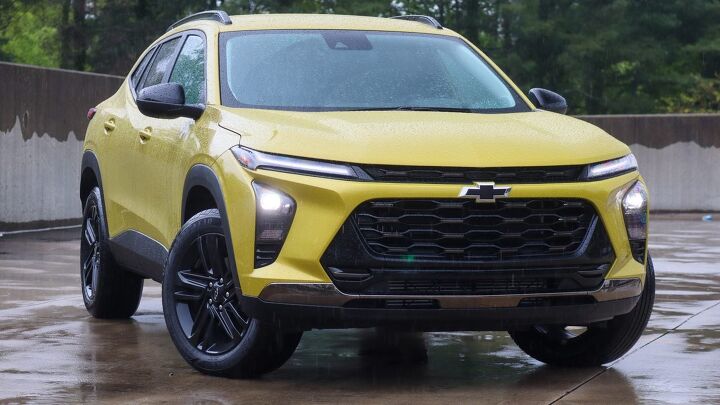























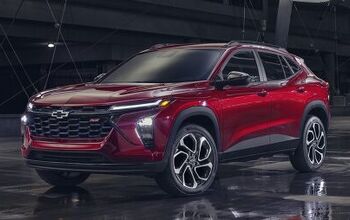
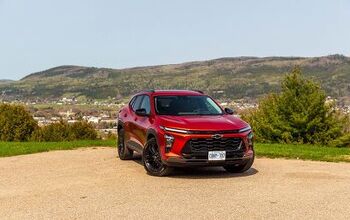

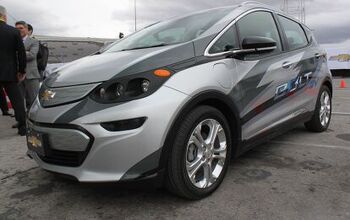
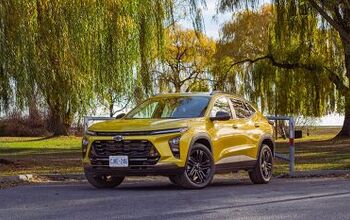
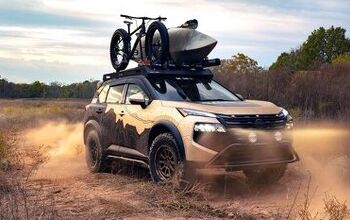


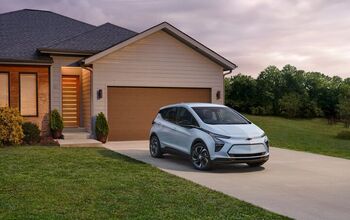
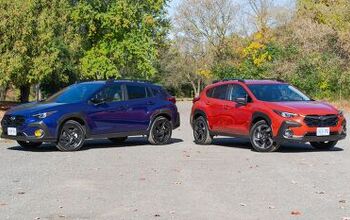
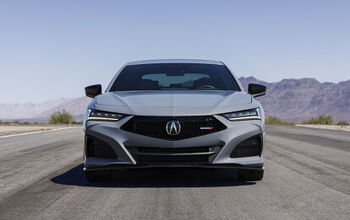

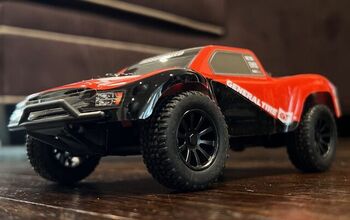

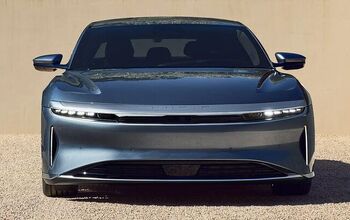
Comments
Join the conversation
I would like AWD, but can get by w/FWD. In 2008, we had 5 feet of snow in one week. I had @ the time a FWD Chevy HHR SS....with winter wheels & snow tires. Drove 77 miles all the way to CIA. I was the only one who showed up for work, some people were 5 min away, but said "they couldn't get out". Drove back home & stayed as the 2nd storm showed up Wed & I now knew better.
Got my 2RS 4 weeks ago. With 1600 miles on it lots of plusses, few minuses. First, love the styling, color(orange), and the interior. I drive approximately 45 miles each way to work on a 2 lane hwy at 55 mph. Computer says I have averaged 38.1 mpg which is far better then I expected. Comfort level is exactly where I would expect it to be for a vehicle of this size, weight, and price. The minuses are foremost the poor lighting from the headlights. Low beams on country roads with hills and curves are terrible. High beams help but side lighting, where the deer are, is poor at best. My equinox was so much better. Have had issues with some of the electronics. Twice, pulled up at ATM or drive thru and driver window would not go down. All other windows worked fine. Once started vehicle and dash remained black until I was a few hundred yards into trip. Radio was on but not illuminated and manual volumn control did not work. Still very pleased hoping that these are just minor hiccups and not leading to other issues